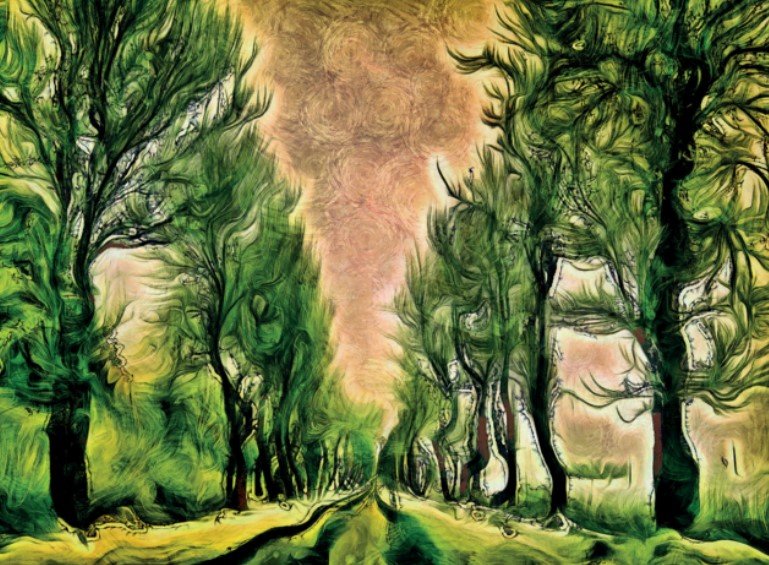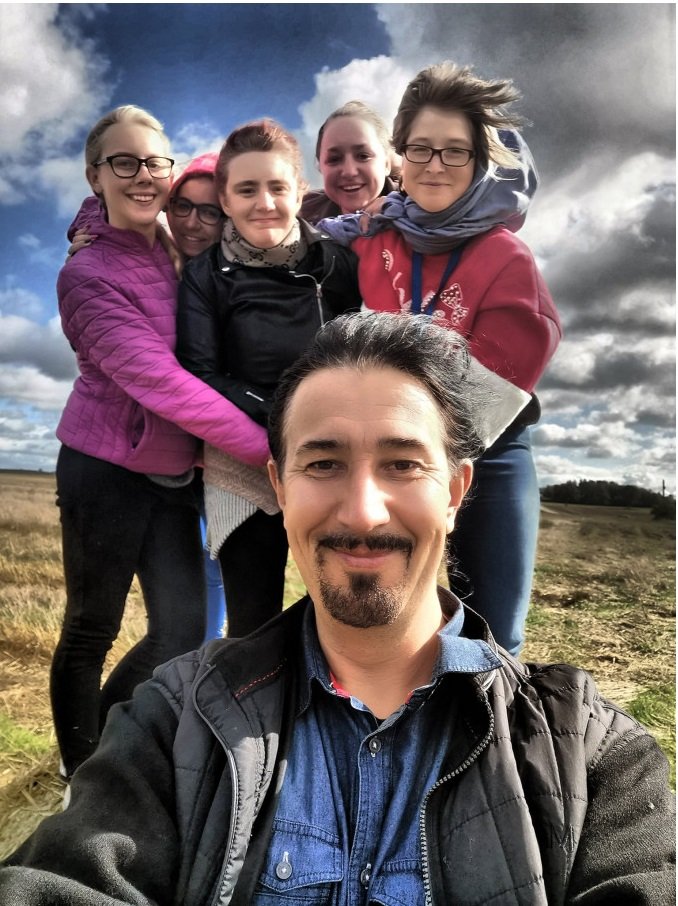
Recognised not only in Lithuania, but also around the world. Every year more and more. And in a more distant lands every time. Children’s unique creations appear on kites, postcards, paintings. Paintings become distinctive interior details. The works of pupils with special needs fascinate, amaze, and make one think and look for the thought hidden behind the drawing. This is the way one could describe the vector paintings created by special needs children, led by a special pedagogue, the free teacher – Valdas Kančauskas, Tavo Vaikas magazine announced.
What is vector painting? What makes it different from conventional art?
It’s digital painting. Some time back, while learning about various technologies, I discovered programs that allow you to paint as if it was real, using paint and brush. Later, printed on a canvas, such a drawing has a canvas texture, so it seems as if all the strokes were actually painted with a brush. Painting on a computer is much more difficult than with a brush, but the unlimited possibilities of painting techniques compensate this. The colour palette alone is impressive.

The process of painting itself looks like this – once a week, using the special “dotting” and “painting” techniques, children are applying their fantasy using computers. Thousands of consistent colour strokes and dots blend to present the children’s stunning original visions. It is a process that requires a lot of concentration, diligence, patience. Drawing opens the gates for children to the world, helps realise themselves and create genuinely impressive works. Works created by a unique technique – the greatest proof of how creation, art erases any boundaries between people – unites, amazes and fascinates.
The creative activities of the group change their emotions and moods, enrich the imagination of the children and allow them to see the world in a deeper and more creative way. Students, being able to create something concrete, after receiving an assessment of society, learn to accumulate, concentrate, seek the result. Creativity is not only an occupation, but also serves as a type of therapy, which is very important during the quarantine. The activities of the group develop creativity, which is the basis for the growth and development of any person.
How does a teacher’s daily routine look like when working with special children who require different attention?
Any type of creative process isn’t easy, but very useful for those special children, because it develops them as personalities, develops, strengthens human abilities of one kind or another. One should know how to establish and maintain contact with a child like this. You have to invest a lot of yourself, accept that you will not always get feedback or that it won’t be as you expected it to. You have to be demanding, but at the same time a good friend of them, everything has to be real, without pretending, because the kids can truly feel it.

As for my students attending the informal Vector Drawing and Photography Basics Group at Kelmė Special School, when drawing, children patiently look for that single mood, colour, and the vector-painted moment is often worthy of eternity: with a unique thought, mood, state, idea, that only playful combination of colours.
How and where do children’s drawings find their place?
We convert computer-painted works into high-resolution photographs, which are printed on a museum-quality, large-format canvas. The children’s drawings then become paintings of a stunning colour range and as works of applied art can decorate hotels, offices, public spaces (e.g. posters), private homes or rise to the sky as a kite at public events. An exhibition of the special children’s drawings has been touring Lithuania as an exhibition for four years now, more than twenty drawings have been exhibited in the U.S., two paintings – at the World Exhibition of Children with Special Needs in South Korea, and there are post-pandemic exhibitions in Canada, Israel and Portugal.
By the way, the Kite of Happiness drawing, moved onto a 70 square-meter flag has already been seen by more than 300,000 people. It was raised high up in the sky during various large events, festivals, social charity campaigns, ship regatta, sports, city fests, event opening celebrations, fairs, sports competitions, concerts. This Kite of Happiness was also flown to Latvia and the United Kingdom. A memorandum of intent for cooperation was recently signed with the representatives of a branch of the world-renowned public organisation Humanaid in South Korea. This will lead to sharing experiences in developing the creativity of special children across borders, and initiating joint social and creative projects for artists with developmental disabilities.

All these projects require significant monetary funds.
Indeed. We are extremely grateful to all the businesses who support us, to the various institutions and associations and to all the goodwilled people who support our ideas and the realisation of our projects. We dedicate particularly great appreciation to those who devote 1.2% of their Resident Income Tax every year. Every euro is used purposefully to facilitate, diversify and improve the daily lives of children with special needs, which in the larger part of cases is certainly difficult.
If you have not yet figured out who you would like / could dedicate your 1.2% of the Resident Income Tax this year, the editorial staff of Tavo Vaikas would strongly encourage to give it to the non-profit organisation “Angelų sodai” founded by teacher and social-activist – Valdas Kančauskas. The organisation works on projects for children with special needs. Company code: 305069302.

Be the first to comment